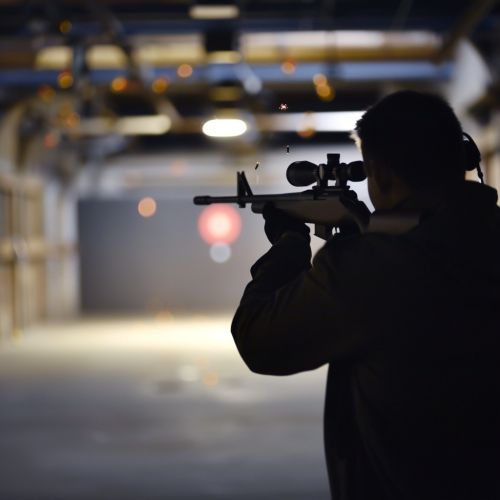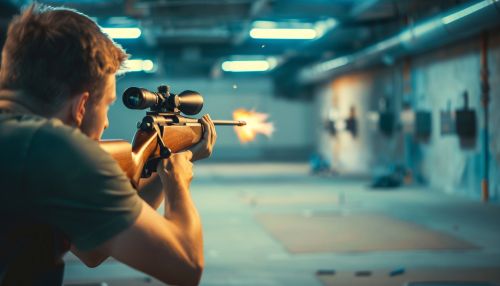Marksman
Overview
A marksman is a person who is skilled in precision shooting, using projectile weapons, usually with a rifle but most commonly with a designated marksman rifle and/or a sniper rifle, to shoot at long range targets. The term has its origins in the Middle Ages, where it was used to describe a highly skilled archer who could hit targets accurately from a distance. Today, the term is often used to refer to a person who has received specialized training in handling firearms and can accurately hit targets from a distance.
History
The concept of a marksman dates back to the Middle Ages, where archers were often used in warfare. These archers, known as marksmen, were highly skilled in using bows and arrows to hit targets accurately from a distance. The term "marksman" was derived from the practice of shooting at a "mark", which was a type of target used in archery.
In the 18th and 19th centuries, the role of the marksman evolved with the development of firearms. Marksmen were often used in the military, where they were tasked with taking out key targets from a distance. This was especially important in warfare, as it allowed armies to eliminate key targets without putting their own troops at risk.
The role of the marksman continued to evolve in the 20th century, with the development of new firearms and ammunition. Today, marksmen are often used in law enforcement and military operations, where they are tasked with taking out key targets from a distance.


Training
Training to become a marksman involves a rigorous and comprehensive program that includes both physical and mental preparation. The training program typically includes instruction in firearms safety, marksmanship fundamentals, ballistics, and tactical shooting techniques.
Marksmen are trained to shoot accurately at long distances, often up to 1,000 meters or more. This requires a high level of skill and precision, as well as a thorough understanding of ballistics and environmental factors that can affect the trajectory of a bullet.
In addition to physical training, marksmen also undergo mental training to prepare them for the pressures of their role. This includes training in stress management, decision-making, and situational awareness.
Equipment
Marksmen use a variety of equipment in their role, including firearms, ammunition, and sighting systems. The specific equipment used by a marksman can vary depending on their role and the specific requirements of their mission.
Firearms used by marksmen are typically rifles, which are designed for long-range shooting. These rifles are often equipped with specialized sighting systems, such as telescopic sights, which allow the marksman to accurately aim at targets from a distance.
Ammunition used by marksmen is typically high-quality and designed for long-range shooting. This includes match-grade ammunition, which is manufactured to higher standards of consistency and accuracy than standard ammunition.
Sighting systems used by marksmen include telescopic sights, red dot sights, and laser sights. These systems allow the marksman to accurately aim at targets from a distance, and can often be adjusted to compensate for factors such as windage and elevation.
Roles and Responsibilities
Marksmen have a variety of roles and responsibilities, depending on their specific role and the requirements of their mission. In the military, marksmen are often used in reconnaissance and surveillance roles, where they are tasked with observing enemy activity from a distance. They may also be used in a sniper role, where they are tasked with taking out key targets from a distance.
In law enforcement, marksmen are often used in situations where a high level of precision is required. This can include situations such as hostage rescues, where the marksman is tasked with neutralizing a threat without harming any hostages.
Regardless of their specific role, all marksmen are trained to shoot accurately at long distances, often up to 1,000 meters or more. This requires a high level of skill and precision, as well as a thorough understanding of ballistics and environmental factors that can affect the trajectory of a bullet.
